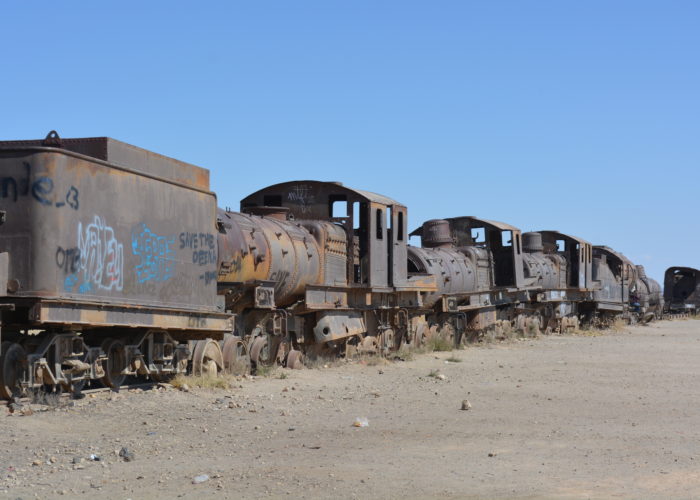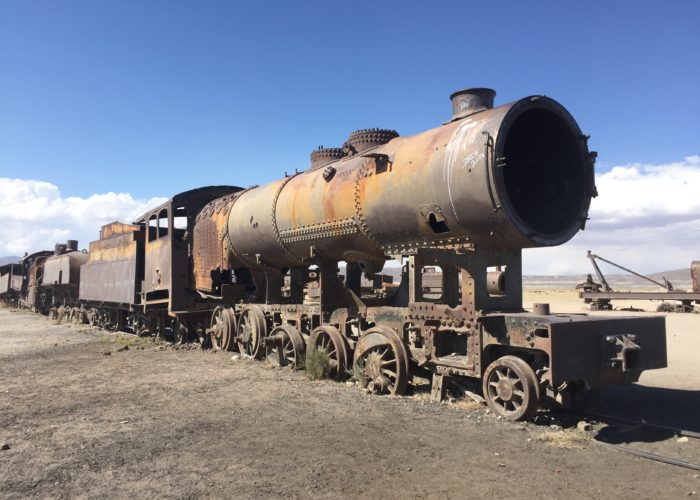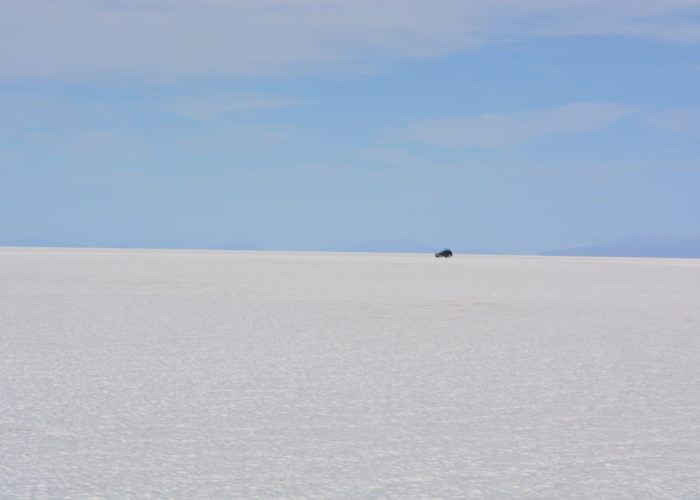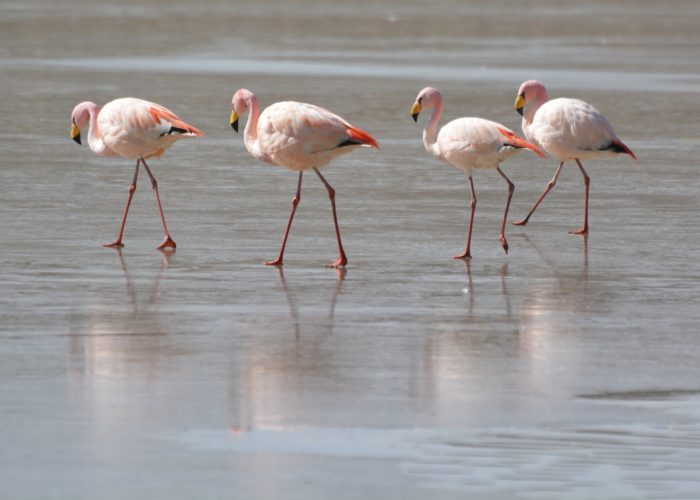Bolivia is quite unlike anywhere else in South America with its strong indigenous Andean culture and traditions which stretch back to before the Spanish conquest now confidently reasserting itself over the thin veneer of Spanish culture imposed by the conquest. Its Catholic religion has been adapted by the indigenous gods and culture, including Pachamama who’s influence is everywhere. While Spanish is widely spoken, and the accent is one of the purest in all of Latin America, local languages including Aymara and Quechua are the languages of the street.
Most visits will start in La Paz, Bolivia’s economic capital which sits at over 3,500 metres, making it one of the highest cities in the world. The largely Aymaran city of El Alto of over a million inhabitants next door sits even higher at over 4,000 metres. Altitude is an important factor in any visit to Bolivia and requires a certain period of acclimatisation.
Bolivia shares with Peru, Lake Titicaca, including two of the most holy sites on the Lake, the Islas del Sol and Luna. The Andean altiplano dominates much of western Bolivia and both the Salar de Uyuni and the National Park, Reserva de Fauna Andina Eduardo Avaroa contain some of the most dramatic scenery in all of Latin America.
Bolivia is the poorest country in South America, but has undergone a transformation in recent years with large numbers of people moving out of extreme poverty as a result some enlightened government policy and increased global demand for the many minerals and commodities mined in Bolivia
Destinations

- La Paz
- Tiwanaku
- Copacabana
- Potosi
- Salar de Uyuni
- Reserva de Fauna Andina Eduardo Avaroa
- La Paz

La Paz is a city quite unlike any other in Latin America or indeed the world. Sitting at 3,500 metres it is very high and it nestles next to the high mountains and with its narrow streets and clogging traffic is chaotic. Sitting on the roadsides all over the centre are Aymaran women, complete with top hats, selling all sorts of produce and merchandise. The diesel fumes that they must breathe in every day can’t be good for their health.
In the centre, where most of the tourist hostels and travel companies is the Witches Market. This is more a collection of shops that sells all sorts of Andean produce including herbal medicines and most unusually dried llama foetuses from miscarried or stillborn llamas. This is also the place to purchase some of the colourful Andean textiles, often at prices much cheaper than neighbouring Peru.
The Catholic churches contain enormous quantities of wealth which sit uneasily amongst some of the poverty in the streets, none more so than the Iglesia San Francisco. Connecting downtown La Paz to its suburbs and next door El Alto is a modern cable car the Mi Teleferico, which is a uniquely modern, efficient and environmentally sensitive way of travelling around. The views from the Teleferico are worth the journey alone and you can spend a whole day simply hopping from one Teleferico to another.
El Alto next door is worth a visit, especially on market day, where all sorts of goods are available for sale. Also in El Alto are the famous cholitas, which is a fun WWF type wrestling with Aymaran women all dressed up in their traditional costumes performing a show for visitors.
2. Tiwanaku
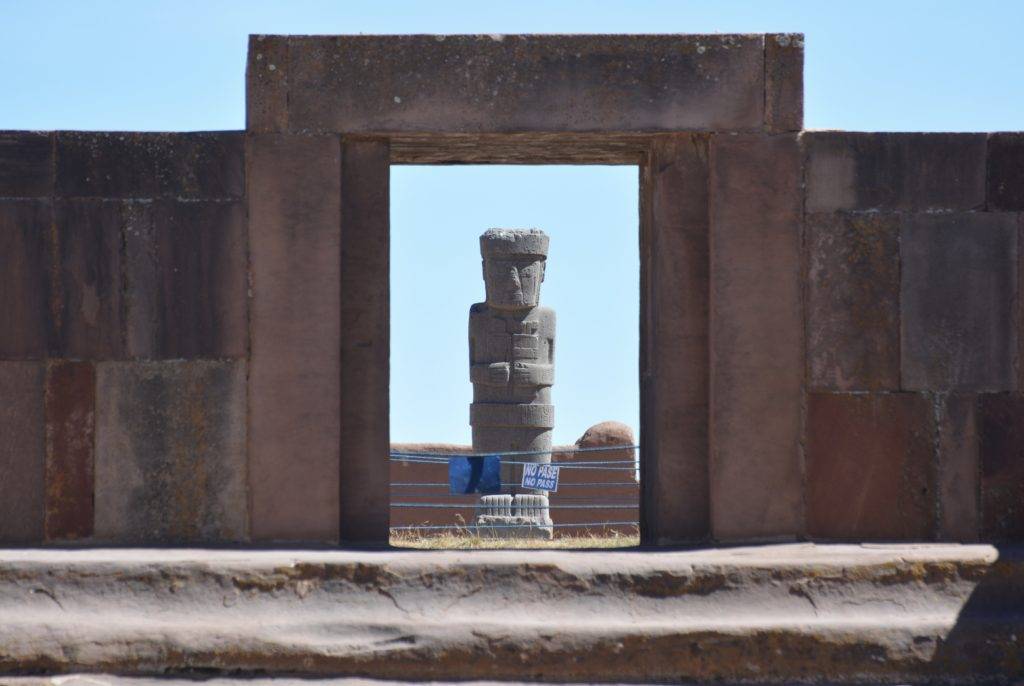
The pre-Incan site of Tiwanaku is one of the most interesting archaeological sites in South America. It dates from before the Incas, and in many ways the Incans absorbed and adopted the techniques and cultures of the civilisations they conquered. Some of the engineering sophistication and techniques used by the Tiwanaku civilisation were significantly more advanced than equivalent Eurpean and other cultures around the world.
Tiwanaku is an easy day trip from La Paz and you need a vehicle to take you to all the principal sites.
3. Copacabana

Lake Titicaca is the highest navigable lake in the world and also a sacred place in Andean culture. The lake is share with Peru and is shaped like a puma. The Bolivian part of the lake contains two of the holiest sites in Isla del Sol and Isla de Luna. These islands are easily visited by day trip from Copacabana and even by Bolivian standards are a step back in time. Neither have any motor transport but have some very pleasant paths to trek. The local Amayran population live in distinct communities on the islands, sometimes there are disputes between them which can mean parts of the islands become inaccessible. However the traditional dress that the population wear and the stunning views across the lake make for a photographic mecca.
The town of Copacabana is a working Bolivian town, with a number of shops selling good value textiles and facilities to make it a good base to explore the surrounding area.
4. Potosi

Potosi sitting at 4,100 metres is one of the highest cities in the world. It is dominated by Cerro Rico where there has been an important silver mine for many years. The mining conditions have always been brutal but the mine has been an enormous source of wealth to the Spanish colonialists and other vested interests, with little of that filtering back to the citizens of Potosi.
The city has many fine buildings and churches that make it an interesting place to visit and an important place to help understand Bolivia. The Casa Real de la Moneda is a must visit museum, which tells the story of the silver mining and also the development of money. The symbol that designates silver from Potosi became the international symbol for the dollar.
5. Salar de Uyuni

The salt flats are vast and one of the features that can be seen from space. The salt flats were once an enormous lake, which has long since evaporated leaving huge deposits of salt that stretch all the way out to the horizon. Travelling across the salt flats visitors have all sorts of fun taking photographs that play with perspective. In the middle of the flats is Incahuasi Island which has all the characteristics of an island in the sea. The panoramic views from the island extend for miles.
In between the salt flats and the town of Uyuni is the train cemetery where there are a large number of rusting old steam engines that used to be used by the mining companies.
6. Reserva de Fauna Andina Eduardo Avaroa

In the south west of Bolivia between the Salar de Uyuni and the Chilean border is one of Bolivia’s most important national parks. The scenery in the national park is spectacular with its glacial salt lakes, volcanoes and multiple colours. The lakes are in multiple colours which are derived from the underlying minerals. Probably most impressive is Laguna Colorada, which has a white crystalline sheen floating on a red coloured lake. Other lakes include Laguna Verde, Laguna Blanco and Laguna Negro each in their respective colour.
The wildlife is diverse, with three types of endemic flamingoes prominent in the lakes, and large herds of vicuñas, llamas and alpacas.
Blogs
- http://highburynomad.com/la-paz-altitude-and-markets/
- http://highburynomad.com/lake-titicaca-holy-lake/
- http://highburynomad.com/potosi-silver/
- http://highburynomad.com/salar-de-uyuni-reserva-de-fauna-andina-eduardo-avaroa-awesome-scenery/
Slideshow
Travel
Travel in Bolivia is largely by bus and between the main cities buses are relatively frequent and good value. With the roads passing through many mountain passes and in places poorly maintained it is important to choose bus companies that have a reputation for safe driving. Also if possible it is best to travel by day, although we had little choice to do the Potosi to La Paz journey overnight.
Travelling south through the Solar de Uyuni and the Reserva de Fauna Andina Eduardo Avaroa, needs to be done using tour companies, which will use Toyota Land Cruisers or other 4 by 4s across the unmade roads and salt flats. Typically a tour will start in Uyuni and either return there in three days or continue on to Chile at San Pedro de Atacama. Again it is important to choose the tour company carefully as vehicles take a real beating across the unmade roads and in some cases the drivers are drunk or dangerously speed.
To the north of La Paz, and into Peru there are many public buses, and also Bolivia Hop operate. This is an offshoot of Peru Hop and bring La Paz and Copacabana into to classic routes through southern Peru.
Costs
Bolivia, is one of the cheapest countries in South America to visit, though it is important not to scrimp on price if it compromises safety. The Bolivian currency, the Boliviano is pretty stable, especially as it is effectively backed by commodity prices which are dollar denominated.
In La Paz and other large cities the banking system works fairly efficiently with ATMs accepting most international cards, though sometimes there are relatively small withdrawal limits, but this can be easily navigated round by separate transactions. Also unlike other countries we found that most Bolivian banks did not charge you for withdrawing money through the ATMs.
Notwithstanding it’s relatively efficient banking system, large parts of Bolivia still works on a cash basis, including many hotels and restaurants, so its important to carry enough cash with you.
Accommodation
There is a full range of accommodation options all over Bolivia, from standard international hotels in La Paz and some major cities to a whole variety of smaller hostels and boutique hotels. Indeed for the most part we used smaller hotels and hostels often using web based sites like booking.com to source our accommodation.
Bolivia Hop has a list of accommodation in each of the destinations they serve, and in some cases offer a discount to Bolivia Hop customers. They will also arrange for transport to collect its customers from a range of local hotels to the bus departure point. This saves waiting around in bus stations, which can often be in the outskirts of the towns.
Places we Stayed
- La Paz: Estrella Andina
- Copacabana: Hotel La Cupula
- Potosi: Hostal Colonial Potosi
- Uyuni: Hostal La Magia de Uyuni
- Villa Candelaria: Hotel de Sal Samarikuna
- Villa Mar:















